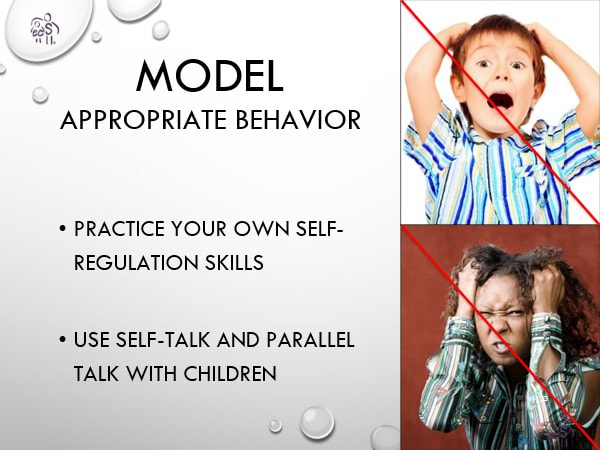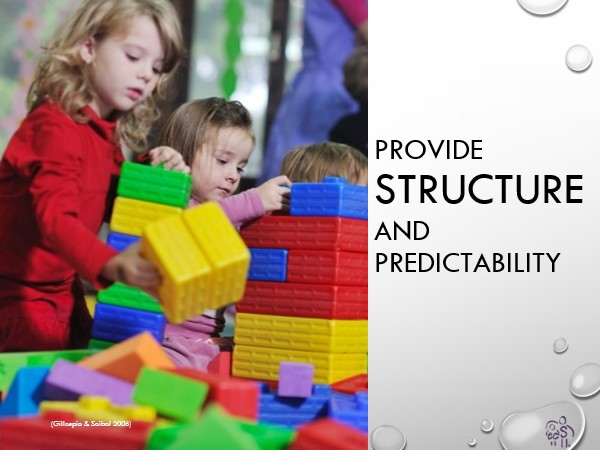|
We hope every one of your children feels your love and care each and every day! And we hope that you feel the love of your children and families, too! As we celebrate Valentine's Day at ECS this week, we wanted to share some ideas that help adults and children feel loved and that support emotional well-being and development as well. 1. Treasure the love!I have often said that one of the nice things about teaching young children is that they still love their teacher! Whether you are a classroom teacher or a daytime caregiver, you are like a second mom or dad! You take care of them for a big part of their day, you make sure they are fed and have things to play with, and you help them learn! Children - and families - know when you value them and will reciprocate by showing their love and trust! Keep those love letters! When you have had a bad day, read those love letters to remind yourself of the impact you have made on a child. To motivate you to help a child realize his/her capacity for love. And keep “love letters” from parents too - those end of the year notes that will remind you of the appreciation of the families you have helped! Whenever you receive little gifts you receive from your children - flowers, drawings, hugs - model appreciation for the person as well as the gift. “I love that you remembered that I like purple!” Expand on the opportunity for positive social and language interactions. Instead of just saying “Thank you, that’s nice!”, engage in conversation. “Tell me about the picture you drew for me.” “What kind of flower is your favorite?” Comment and share your favorite tokens of love from children! 2. Let children know they are loved!Adult-child relationships are crucial to healthy social emotional development - and to learning, behavior and health! Give children positive feedback and interactions that will let them know that they are treasured and appreciated. Show them that they are both loved and capable of loving. On the subject of love, one of our favorite stories to read to children is “How Do I Love You?” by P.K.Hallinan. With simple words and illustrations, it reassures, “I love you on your very best and very worst of days.” It goes on to model phrases we can use everyday, like, “I love to see you smile!” and “I love to watch you play.” Whether in the classroom, or snuggled up with our own children at home, reading it conveys the message of unconditional love. Dr. Gabor Mate’, an expert on trauma, addiction, stress and childhood development, states that, “Love felt by the parent does not automatically translate into love experienced by the child.” We can help communicate our love by sharing stories and expressing heartfelt messages. Time spent reading to and talking with children can strengthen the loving bond and help our children to experience it for themselves. For more ideas on how to express love and strengthen the connections children need to thrive, visit these websites:
How do you let the children in your life know that you love them? Comment and share your ideas with us! 3-9 [slideshow]. Use these 7 intentional teaching strategies:We hope you find these ideas helpful as you support your children's emotional development. For information about our own "4 C's Framework of Emotional Support," check out our other blog posts: Besides sharing tips with you, we also want to let you know how much we appreciate you. The loving things you do for your children and families every day are helping to make ECS' vision come true: a more compassionate world where every child is cherished and nurtured. Thank you!! From all of us at ECS, happy Valentine's Day! References & ResourcesBrackett, M. (2019). Permission to Feel. London, England: Quercus Publishing.
Bailey, B. A. (2000). I Love You Rituals. New York City: William Morrow Paperbacks. Kostelnik, M. J., Rupiper, M., Soderman, A. K., & Whiren, A. P. (2014). Developmentally Appropriate Curriculum in Action. Upper Saddle River, NJ: Pearson. Safe Place Breathing Icons. (n.d.) Conscious Discipline. https://consciousdiscipline.com/resources/safe-place-breathing-icons/
0 Comments
Now I'd like to share strategies for the 4th C, which is the support children need when they are calm and ready to learn: Capacity-building of self-regulation. The 4 C's Framework of Emotional Support
The 4th C: Capacity-Building of Self-Regulation
Many of the developmentally appropriate practices we use in the early childhood classroom help to build children's capacity for self-regulation. Strengthening relationships, teaching self-regulation and social skills, helping children to learn about feelings, and modeling self-regulation skills are ways to provide capacity-building strategies. In addition, sometimes we need to adjust our expectations of individual children's behaviors, accommodating possible developmental delays in executive functioning or self-regulation skills. Sometimes we may also need to adjust the environment, providing supports that make it more likely that children can navigate challenging situations. We do this when we ensure our environments are developmentally appropriate for all our children. It's helpful to include: predictable schedules with adequate warnings before transitions; a self-regulation or calming space where children can go to settle themselves down; and a variety of soothing sensory activities (5). Let's look more closely at seven strategies for building children's capacity for self-regulation. 1. CONNECT
2. TEACH Self-Regulation Skills
Just as with other concepts and skills, we can scaffold our instruction of self-regulation and social skills. We can be specific on what it means to take turns or which words to use in which situation. We can coach the children (include all those involved in the situation), walking them through the behaviors you are teaching. Later, we can provide prompts or visual cues to remind them of the expectations and provide encouragement for their efforts. Of course, they'll also need lots of practice! 3. MODEL Appropriate Behavior
4. Provide STRUCTURE and Predictability
Children who are delayed in the skill of flexibility likewise need our support to accommodate their needs. These children need extra warnings before transitions that help them plan for the next activity, especially when transitioning from something fun to something that's not so fun. When we break the tasks down into smaller steps, we can help children get successfully through the change in activities. Here's an example:
5. Play GAMES that Help Children To Stop and Think
6. Adjust your E's- Your EXPECTATIONS and the ENVIRONMENT
So we must accommodate these children's developmental delays in self-regulation. We may need to adjust our expectations of these children's ability to follow directions, take turns, stay on task, and other self-regulation skills. As an example, perhaps they can leave circle time sooner, or at least take a break or have a fidget toy or wiggle cushion to help them move while listening. Secondly, sometimes we need to adjust the environment. Children with sensory processing problems often become overwhelmed by sensory input, that is, by the sounds, lights, smell, and touches they experience in the environment. So we may need to accommodate these hypersensitive children by adjusting the sound and light level, providing more comforting, enclosed spaces and including a greater variety of sensory activities and materials in our classrooms. Using visual cues such as picture schedules may also be helpful. (See resource 7 for examples.) 7. Help Children REFLECT on their Feelings and Learn to CALM Themselves
There are many books that help children reflect on their feelings and the feelings of others. Be sure to check out our own eepworm books and toys! When reading with children, talk about the emotions the characters experience and how to recognize them. As mentioned before, we can teach children calming techniques such as deep breathing and other mindfulness practices to help children learn to calm themselves. We can also provide a self-regulation center or calming space so children can practice these techniques when they get upset. This is good for all children, not just the ones who have difficulty with self-regulation. (See our blog posts on mindfulness and resource 7 for activities for children.) I hope you've gained some strategies that help you build children's capacity for self-regulation. Let me know which ones work best for you. Any additional tips are welcome as well - we can all learn from one another! References & Resources
When young children are upset, they usually need help from adults to calm down. And the more upset they are, the more help they need! When children are distressed, acting out, or having a tantrum or a meltdown, they don't often know what to do. Sometimes as adults we don't know what to do, either! We may try distraction ("Look at this book"), reassurance ("You're okay"), questioning ("Why are you crying?), reasoning ("We have to clean up so we can have our snack") or consequences ("You need to be by yourself until you can calm down"). Unfortunately, these efforts don't always work as well as we'd like. Brain research and experts in child development, psychology and psychiatry show us a better way (1, 2, 4, 7). To handle their upset, children need three things from adults: Connection, help with calming, and to be treated with empathy and compassion. In my Framework of Emotional Support, I call these the 3 C's of co-regulation. (Co-regulation is the set of the adult strategies we use to help children manage overwhelming emotions.) Let's look at strategies for each of the 3 C's of co-regulation: 1. Connection
2. Calming
3. Compassion
After giving empathy, show compassion by offering to help the child deal with the feeling. Let them know "I'm here to help." Your job is to help them deal with the feeling, not to "give in" to what the child wanted that started their upset. I hope these strategies help you support upset children with the 3 C's of connection, calming, and compassion. Later, when children are calm and ready to learn, we can provide the other support they need. I call it capacity-building of self-regulation: We can build their capacity for self-regulation and resilience. We do this by teaching them what to do instead and by applying other strategies and environmental supports to help them handle future challenges. Watch for the next blog post for information about this fourth "C". References and Resources:
|
AuthorI'm Diane Goyette, a Child Development Specialist, Trainer, Consultant and Keynote Speaker. I'm excited to share my blog! Archives
August 2023
Categories
All
|
|
Ways to Contact Us:
Schedule an Appointment |
|
Follow earlychildhoodspecialties for encouragement, teaching tips and more!
|
Follow eepworm for child-friendly posts!
|
© 2013-2024 Early Childhood Specialties LLC. All rights reserved.
















 RSS Feed
RSS Feed